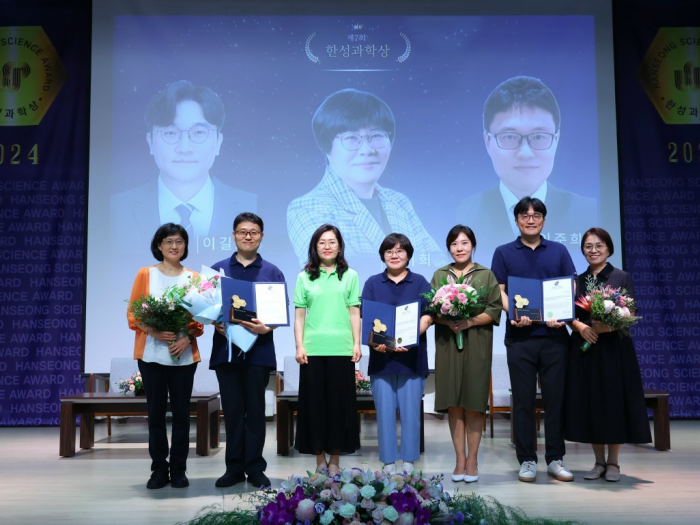
Ann Arbor
Michigan, 48109-2200 United States
Available to mentor

We study the relationship between stress, aging and metabolism. Environmental stresses are generally considered to accelerate aging and age-associated tissue dysfunction because they damage important cellular macromolecules such as DNA, protein and lipids. However, cells have several stress adaptation mechanisms that can reduce negative impacts on cell and organismal homeostasis. Interestingly, appropriate activation of such adaptive mechanisms could often lead to not only increased stress resistance but also general extension of health and lifespan. We hope that, in the future, we are able to utilize some of these protective mechanisms to generate therapeutics for age-associated degenerative disorders.
Lee Lab
-
Center MemberGlobal REACH
-
Center MemberCenter for Computational Medicine and Bioinformatics
-
Center MemberCaswell Diabetes Institute
-
Center MemberRogel Cancer Center
-
Center MemberSamuel and Jean Frankel Cardiovascular Center
-
Center MemberCenter for Cell Plasticity and Organ Design
(1) Stress-inducible Sestrins and their role in age- and obesity-associated metabolic pathologies, (2) Biochemical mechanisms underlying physiological functions of Sestrins, (3) Pathogenetic mechanisms of how autophagy is abrogated in human diseases including non-alcoholic fatty liver disease (NAFLD) and movement disorders, (4) Stress-induced protein inclusions and RNA granules, (5) Single cell-level understanding of stress-induced transcriptome changes, and (6) Technology development for single-cell and subcellular studies of spatial transcriptome and proteome.
-
Si Y, Lee C, Hwang Y, Yun JH, Cheng W, Cho C-S, Quiros M, Nusrat A, Zhang W, Jun G, Zöllner S, Lee JH, Kang HM. Nat Methods, 2024 Oct; 21 (10): 1843 - 1854.Journal ArticleFICTURE: scalable segmentation-free analysis of submicron-resolution spatial transcriptomics.
DOI:10.1038/s41592-024-02415-2 PMID: 39266749 -
Cobb T, Hwang I, Soukar M, Namkoong S, Cho U-S, Safdar M, Kim M, Wessells RJ, Lee JH. Proc Natl Acad Sci U S A, 2023 Sep 26; 120 (39): e2220556120Journal ArticleIditarod, a Drosophila homolog of the Irisin precursor FNDC5, is critical for exercise performance and cardiac autophagy.
DOI:10.1073/pnas.2220556120 PMID: 37722048 -
Cho C-S, Xi J, Si Y, Park S-R, Hsu J-E, Kim M, Jun G, Kang HM, Lee JH. Cell, 2021 Jun 24; 184 (13): 3559 - 3572.e22.Journal ArticleMicroscopic examination of spatial transcriptome using Seq-Scope.
DOI:10.1016/j.cell.2021.05.010 PMID: 34115981 -
Kim M, Kowalsky AH, Lee JH. Annu Rev Physiol, 2021 Feb 10; 83: 381 - 403.Journal ArticleSestrins in Physiological Stress Responses.
DOI:10.1146/annurev-physiol-031620-092317 PMID: 33113341 -
Kim M, Sujkowski A, Namkoong S, Gu B, Cobb T, Kim B, Kowalsky AH, Cho C-S, Semple I, Ro S-H, Davis C, Brooks SV, Karin M, Wessells RJ, Lee JH. Nat Commun, 2020 Jan 13; 11 (1): 190Journal ArticleSestrins are evolutionarily conserved mediators of exercise benefits.
DOI:10.1038/s41467-019-13442-5 PMID: 31929512 -
Park SR, Namkoong S, Friesen L, Cho C-S, Zhang ZZ, Chen Y-C, Yoon E, Kim CH, Kwak H, Kang HM, Lee JH. Cell Rep, 2020 Aug 25; 32 (8): 108077Journal ArticleSingle-Cell Transcriptome Analysis of Colon Cancer Cell Response to 5-Fluorouracil-Induced DNA Damage.
DOI:10.1016/j.celrep.2020.108077 PMID: 32846134 -
Cho C-S, Park H-W, Ho A, Semple IA, Kim B, Jang I, Park H, Reilly S, Saltiel AR, Lee JH. Hepatology, 2018 Oct; 68 (4): 1331 - 1346.Journal ArticleLipotoxicity induces hepatic protein inclusions through TANK binding kinase 1-mediated p62/sequestosome 1 phosphorylation.
DOI:10.1002/hep.29742 PMID: 29251796 -
Namkoong S, Ho A, Woo YM, Kwak H, Lee JH. Mol Cell, 2018 Apr 5; 70 (1): 175 - 187.e8.Journal ArticleSystematic Characterization of Stress-Induced RNA Granulation.
DOI:10.1016/j.molcel.2018.02.025 PMID: 29576526

